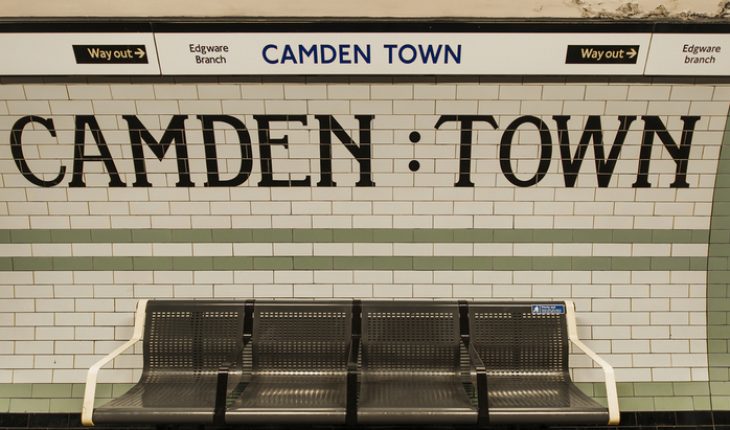Travelling on the London Underground, or another city subway service, is seldom a pleasant experience – but if you suffer claustrophobia or anxiety, it can be terrifying.
There is the fear of being underground, of being trapped between stations, of crowds or being crushed, and of course the fear of terrorism.
When someone has a phobia of travelling underground, they have made an association in the past linking fear to that experience, therefore creating a negative trigger or stimulus response to Tube journeys.
When someone has a phobia of travelling underground, they have made an association in the past linking fear to that experience, therefore creating a negative trigger or stimulus response to Tube journeys.
Ivan Pavlov did experiments with dogs by ringing a bell and feeding them. He kept doing this until eventually when the dogs heard the bell, they would salivate like they’re about to be fed. This was because the bell had become linked to food in the dog’s minds.
This happens all the time with humans in both positive and negative ways. Certain tastes and smells, certain locations or objects can take us back in time to a memory and the feelings that went with it. For example, the smell of baking may remind you of tea at your nans, or a certain song reminds you of an era in your past. When you smell or hear them, it takes you right back there. Many stimulus responses are created through our life and we often respond to them without even knowing what the trigger is, we just start feeling happy or sad for no reason.
With fear of the London Tube, it’s likely that you have had a negative experience in your past, i.e. getting stuck on a Tube before, or maybe a childhood experience of getting lost in a crowd or even getting trapped in a cupboard playing hide and seek. Once a trigger has been created, the part of the mind that deals with recognition generalises these experiences and helps the mind take shortcuts by linking the feelings of being trapped in the cupboard or the fear and panic of being caught up in a crowd, with being stuck underground.
The brain can generalise our fears so well, that one strong negative experience can be enough for us to react with fear whenever we are in a similar situation or emotional state.
Whenever you experience or think about Tube travel in the future, your mind fires off the fear reaction, your body fills with adrenaline and you respond with fight, flight or freeze and while this is an important survival response, we can link fear to situations where we are not in any real danger.
With Tube travel, this is made worse by the fact that our survival response is designed for us to either run, fight or hide. If, however, you are stuck in a Tube underground, you have no way to release the sudden adrenaline rush, so your body will start to shake, your heart can begin to race and your fear becomes compounded, and the whole process becomes a vicious cycle.
If, however, you are stuck in a Tube underground, you have no way to release the sudden adrenaline rush, so your body will start to shake, your heart can begin to race and your fear becomes compounded, and the whole process becomes a vicious cycle.
So, if you have a fear of travelling on the Underground, what can you do to change it?
First get precision on exactly what you’re afraid of. Is it being stuck in crowds, being underground or something else? Is it a combination of things?
Think about starting a phobia journal so you can begin to notice the patterns, i.e. the time of day you travel or the length of time you are underground. The clearer you can become about what triggers your fear, the easier it is to start to deal with it. Also, check out the new Tube map that shows which parts of the journey are actually underground and which parts are in the open. (See: https://tfl.gov.uk/info-for/media/press-releases/2017/july/new-map-to-help-people-with-claustrophobia-and-anxiety)
Next challenge your thinking with these questions:
· What specifically are you predicting will happen if you take the Tube?
· How likely (0–100%) is it that this will actually happen?
· When you predict catastrophes, do they actually come true?
· How many times have you been wrong in the past about your fear of Tube travel?
· What actually happened?
· What is your inner voice saying to you about your fear? E.g. “We’re going to get stuck underground.” or “I will get crushed in the carriage.”
· Ask yourself where that inner voice comes from?
· Is it loud or quiet?
· What would happen if you change the tonality of this voice and make it like a chipmunk or really slow and boring? What does it do to how you are feeling?
Next look at changing the way you respond to the Tube.
The key is to think of, or imagine, a time when you felt completely calm and relaxed e.g. sitting on a beach or being around people you love.
Now imagine going back to that time and notice all the images, feelings and sounds that go with this event. When you have fully connected to this positive event, squeeze your fist to create a link between the emotion and the gesture, and as the emotion fades release your fist.
Keep repeating this exercise as many times as you like, with as many positive events as you can think of. Once you have done this a few times, test it by squeezing your fist and notice how you feel. If it’s strong enough, just the act of squeezing your fist will bring back that calm feeling. If it’s not strong yet – keep repeating the exercise until it is. The next time you are on the Tube or feeling anxious thinking about it, squeeze your fist and if the new conditioning is strong enough, it should reduce the negative feelings.
If you have a fear of Tubes you can download a free kit and audio tracks here:
- Ridiculous Spell can help fix your phobia - 1st March 2018
- 10 most common Christmas stressors - 22nd December 2017
- Samhainophobia – top 10 Halloween phobias - 29th October 2017







